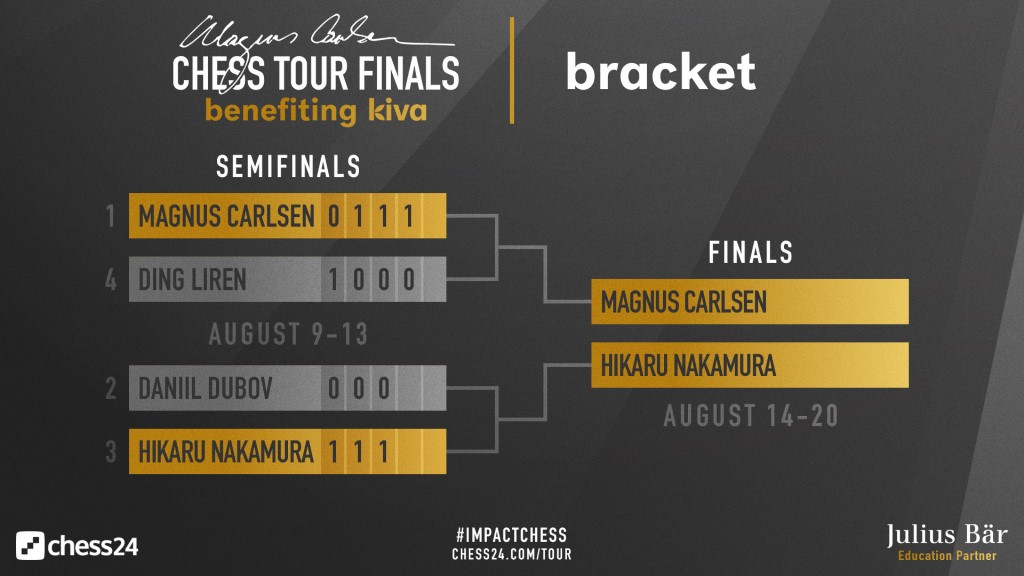


The Magnus Carlsen Tour started on April, with the Magnus Carlsen Invitational. That inaugural event saw the world champion defeating Hikaru Nakamura in a closely disputed final match. Nakamura then knocked out Carlsen in the semis of the Lindores Abbey Rapid Challenge — the one tournament the Norwegian did not win in the tour. Four months later, things come full circle, with Carlsen and Nakamura set to play a best-of-7 final match starting Friday.
Nakamura made quick work of Daniil Dubov in the semis, while Carlsen lost the first set, won the following two sets convincingly and miraculously defeated Ding Liren in the fourth mini-match of the series. Ding showed strong performances in most games on Wednesday, but was unable to convert his promising positions into full points.
Fatigue might be an important factor in the final, as Nakamura did not play in the Legends of Chess tournament that finished just a week ago and had an extra rest day after beating Dubov in straight sets. Carlsen in fact won the aforementioned Legends of Chess event and showed uncharacteristic instability in his play during his match against Ding. The world champion is surely capable of recovering in time, but he will have to prepare for what most likely will be a long-winded confrontation against a rock-solid Nakamura.

Click to enlarge
The world champion surprised Ding in game 1 with a novel concept, got clearly ahead on the clock and went on to score a convincing 45-move victory. Ding bounced back immediately, and finished off his opponent in style:
With all his pieces pointing at Black’s weakened kingside, Ding went for the attack — 24.Bxh6 Qf6 25.Bh7+ Kh8 26.Rxe8+ Rfxe8 27.Ng6+
Black is doomed, but Carlsen allowed his opponent to show mate on the board: 27...Kxh7 28.Nf8+ Kxh6 29.Qh7+ Kg5 30.Qh4+ Kf5 31.Qf4#
The score was levelled, and Ding missed chances to take the match to a fifth set both in games 3 and 4 — first in a pawn-up knight v bishop endgame and then from a middlegame position that commentators Leko and Seirawan considered to be extremely favourable to the Chinese.
Carlsen played white first in the blitz tiebreakers and could only get a 33-move draw out of a London System. The world champion then blundered a tactical shot in his game with black:
Black missed 26.Bxa5 — as 26...Nxa5 would be followed by 27.Rc7, giving white a large advantage. Carlsen opted for 26...Bg5 and ended up a pawn down with a rook against two minor pieces. But it was Ding who made the last mistake:
32.h4 allowed the sneaky 32...Qa8, when Black’s threats to mate on h1 completely turned the tables in favour of the world champion. Carlsen did not falter again and won the game in 45 moves. It was a sad end to the tournament for the Chinese.